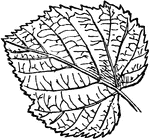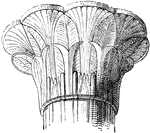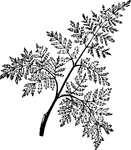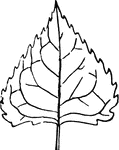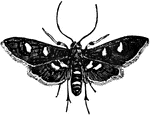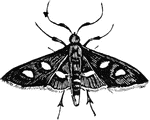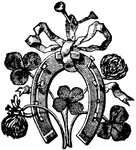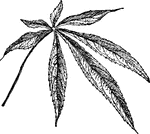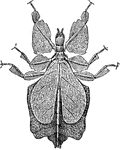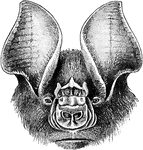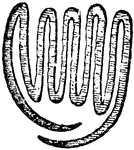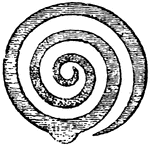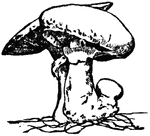
Toad-stool
"Many cells, but without differentiation into stem and leaf; growing horizontally in spreading shoots…

Reichstag
"It is a gorgeous structure decorated with statues, carvings, and gold leaf, situated close by the Thiergarten."…

Pear Design
"Also known as the cone, the palm leaf, the river loop, the crown jewel, the seal, the almond, the feather,…
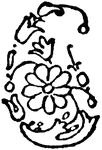
Pear Design
"Also known as the cone, the palm leaf, the river loop, the crown jewel, the seal, the almond, the feather,…

Pear Design
"Also known as the cone, the palm leaf, the river loop, the crown jewel, the seal, the almond, the feather,…

Pear Design
"Also known as the cone, the palm leaf, the river loop, the crown jewel, the seal, the almond, the feather,…
Pear Design
"Also known as the cone, the palm leaf, the river loop, the crown jewel, the seal, the almond, the feather,…
Pear Design
"Also known as the cone, the palm leaf, the river loop, the crown jewel, the seal, the almond, the feather,…

Rhodian or Lily Design
Composed of small flowers with three triangular petals and a long stem. Has the appearance somewhat…

Rhodian or Lily Design
Composed of small flowers with three triangular petals and a long stem. Has the appearance somewhat…
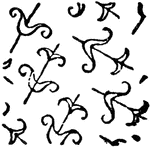
Rhodian or Lily Design
Composed of small flowers with three triangular petals and a long stem. Has the appearance somewhat…
Rhodian or Lily Design
Composed of small flowers with three triangular petals and a long stem. Has the appearance somewhat…

Peltate
A shield-shaped that is with the stalk attached somewhere within the circumference of the leaf or other…
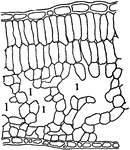
Apple Leaf
A magnified portion of an apple leaf. It shows many small sacks grown together. Each of these sacks…
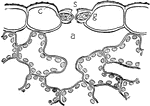
Stoma
This illustration shows a section across a stoma. The stoma is the tiny opening or pore, found mostly…

Aralia
A genus of the plant family Araliaceae, consisting of about 30 species of deciduous and evergreen trees…
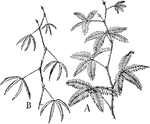
Mimosa
Figure A shows the leaf position of the light sensitive plant, Mimosa in sunlight. Figure B shows it…

Pine Leaf
This image shows the cross-section of the outer cells of a leaf of pine. S, stoma; E, epidermis; C,…

Rhododendron
This illustration shows a section of a leaf of Rhododendron. Note the compact palisade tissue which…
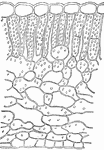
Spathyema
This illustration shows a section of the leaf of skunk cabbage, Spathyema. Note the poorly developed…
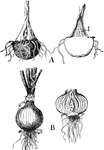
Onion
This illustration shows the shortened types of stems: A, corm of jack-in-the-pulpit. At left surface…

Mycelium
This illustration shows an enlarged view of the mycelium, ascocarp, etc., of one of the mildews, Erysiphe:…
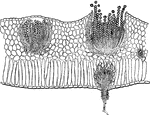
Claytonia
This illustration shows cluster cups in a section of a leaf of spring beauty. At right one of the cups…
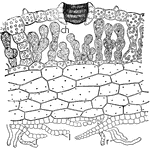
Marchantia
This illustration shows a section through the center of the thallus of Marchantia, showing one of the…
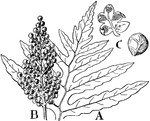
Onoclea
This illustration shows the sensitive fern, Onoclea: A, portion of normal green leaf. B, a spore-bearing…

Selaginella
This illustration shows a common cultivated Selaginella: I, habit of the plant-s, strobili; b, a branch…

Angiosperm
This illustration shows the flower and sporophylls of Angiosperms: 1, flower of Sedum with leaf-like…
White Lily
This illustration shows a radical leaf of the White Lily, with its base thickened into a bulb-scale,…

Quatrefoil
In architecture, a piercing or panel divided by cusps or foliations into four leaves, or more correctly…

Venus Fly Trap
A plant with a rosette of root leaves, from which rises a naked scape bearing a corymb of rather large…

Pinnatifid Leaf
A leaf cut or cleft in a pinnate manner, with the divisions half way down or more, and the sinuses or…

Shamrock
"The national emblem of Ireland, is a plant with a leaf formed from three leaflets. It is thought to…

Pondweed Leaf
"Vertical section of the leaf of Potamogeton or Pondweed, showing air cavities or lecunae l, and parenehymatous…
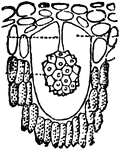
Urostigma Elasticum
"Cellular tissue from leaf of Urostigma elasticum. c, a large cell; r, cystolith, an agglomeration of…

Epidermis
"Vertical section of epidermis, from the lower surface of the leaf of Madder, showing the intimate union…
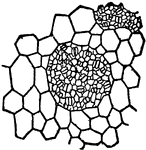
Saxifraga Sarmentosa
"Epidermis of leaf of Saxifraga Sarmentosa, showing clusters of stomata s, surrounded by large epidermal…
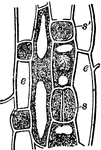
Hyacinth
"Formation of stomata from leaf of Hyacinth, seen from the surface. e, epidermis cells; s', mother-cell…


